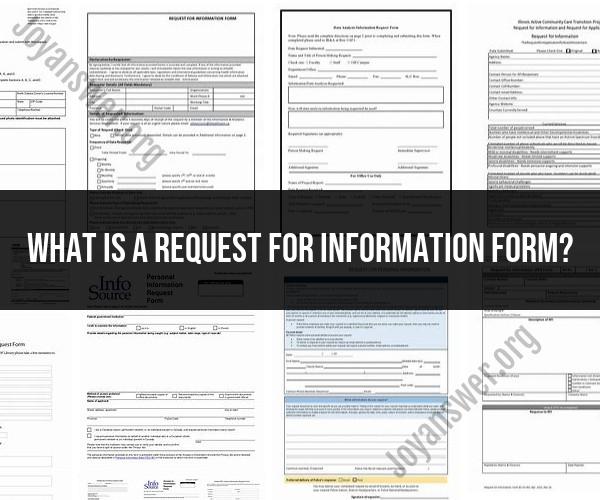What is a request for information form?
A Request for Information (RFI) form is a document used in various contexts to formally collect information from individuals, organizations, or vendors. It is typically utilized in business, government, and procurement processes to gather data and details about products, services, capabilities, or qualifications of potential suppliers, contractors, or partners. RFIs are commonly used when an entity is exploring options, researching potential solutions, or seeking to understand the market landscape before making a more specific request or decision.
Key characteristics of a Request for Information (RFI) form include:
Information Gathering: The primary purpose of an RFI form is to obtain information. This can encompass a wide range of topics, including products, services, prices, qualifications, experience, and more.
Pre-Procurement Stage: RFIs are often used in the early stages of procurement or project planning. They help organizations assess potential suppliers or service providers before issuing a formal Request for Proposal (RFP) or Request for Quotation (RFQ).
Non-Binding: Responding to an RFI is typically non-binding, meaning that the information provided does not commit the respondent to any particular action or contract. It is a preliminary inquiry.
Customizable: RFIs can be customized to suit the specific needs of the requesting organization. The form can include specific questions, instructions, and requirements tailored to the inquiry.
Confidentiality: Depending on the nature of the information requested, RFIs may include confidentiality clauses to protect sensitive data.
Multiple Respondents: RFIs are often sent to multiple potential suppliers or service providers, allowing the requesting organization to compare responses and make informed decisions.
Open-Ended: RFIs may include open-ended questions that encourage respondents to provide detailed information and explanations rather than simple yes/no answers.
Decision-Making Tool: The information gathered through RFIs can serve as a basis for decision-making. It helps organizations identify qualified candidates, understand market trends, assess costs, and evaluate options.
No Commitment: Responding to an RFI does not commit the respondent to participating in future stages of the procurement process, such as responding to an RFP or entering into a contract.
Feedback Opportunity: RFIs can also be used as an opportunity for potential vendors to seek clarifications or provide feedback on the requirements or specifications outlined in the RFI.
In summary, a Request for Information (RFI) form is a valuable tool used by organizations to collect preliminary information and assess potential suppliers, partners, or solutions. It helps streamline the decision-making process by providing a structured way to gather data and evaluate options before moving forward with more formal procurement or partnership arrangements.












